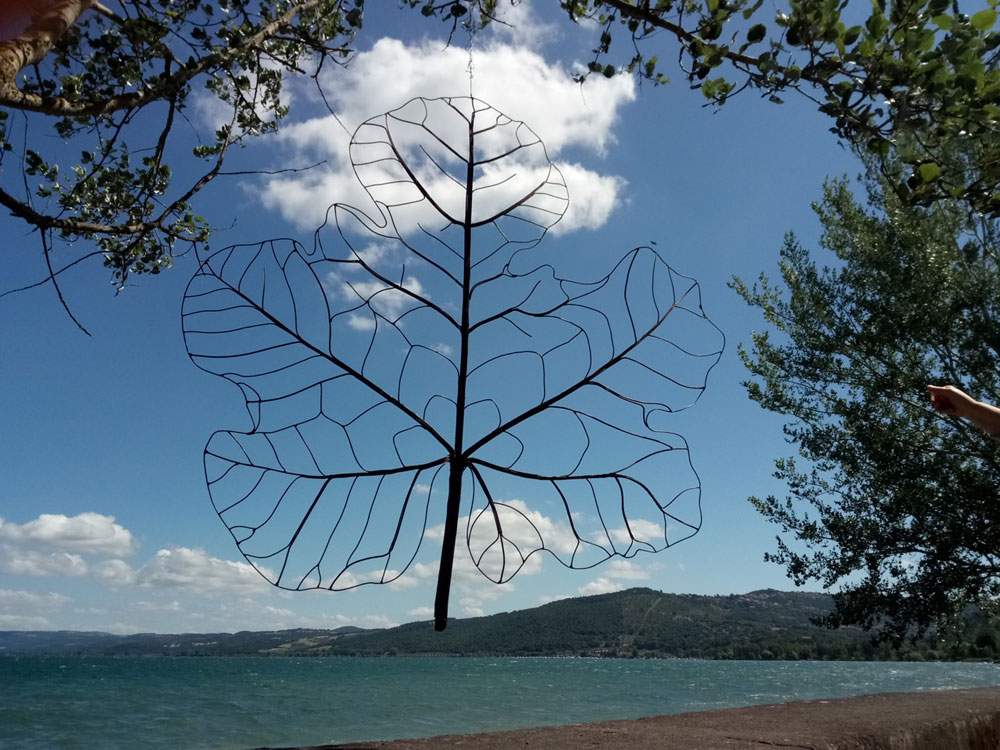From July 24 to September 13, 2020, the exhibition In terra di Vulci will take place at the archaeological site of Vulci, the medieval village of Montalto di Castro and the village of Pescia Romana. Contemporary Sculpture Inside and Outside the Walls, curated by Francesca Perti. Mara van We es’ exhibition project will present works by artists Pasquale Altieri, Paolo Buggiani, Tommaso Cascella, Massimo Di Giovanni, Eva Gerd, Carmine Leta, Samuele Vesuvio, Mara van Wees and Paul Wiedmer.
This traveling exhibition in the three different venues marks the fourth edition of the artistic-cultural project promoted by the Cultural Department of the Municipality of Montalto di Castro. The archaeological site of Vulci represents the splendor of the Etruscan and Roman civilization, the medieval village of Montalto di Castro is the place where the population was safe within the walls, and the agricultural village of Pescia Romana is a symbol of the agrarian reclamation and the following economic and social redemption.
Each artist involved will participate in the project according to his or her own specific language; all are linked to Tuscia by residence, artistic inspiration, and notoriety. Of particular note is the artists’ presence and collaboration at Serpara, a sculpture garden in Civitella d’Agliano.
The Domus del Criptoportico in Vulci Park will host a dialogue between time, history and the languages of contemporary art. Pasquale Altieri stops the moment of a presence from the past; Tommaso Cascella with his dome Cielo gives imaginary coverage to the domus, while Massimo Di Giovanni abandons his large Shield like the resting warrior of Francois’ tomb. Eva Gerd with animal bones creates Impronte Spigolose, Carmine Leta with his Moebius draws the skyline of Vulci, and Mara van Wees proposes Cosma, a contemporary mosaic composed of scraps of building materials.
In the village of Montalto di Castro, whose historic center is still inhabited, Pasquale Altieri transforms the ex-Shell premises into Museum at the entrance to the historic center. Eva Gerd weaves on an old grate Mute Confessions and, among the alleys, hangs Tree of Life-Sleeping Sprouts. Carmine Leta places his Genesis at the back of the church of Santa Croce and soars his Promise into the skies of Montalto from a lookout. Samuele Vesuvio makes his Princess flee from the balcony because he wants her to be a free woman. Mara van Wees builds the Watchtower with prisms and her Rouge M File signals arches and covered passages and leads to the wunderkammer where the Red House joins the red of the Guglielmotti Palace. Paul Wiedmer draws with a purple thread the presence of a host.
Finally, in the Borgo Nuovo of Pescia Romana, Mara van Wees exhibits her Man at Work at the edge of the large square. Pasquale Altieri retreats to his wunderkammer where he creates a sort of imaginary archive; Paolo Buggiani, with his Tin Crocodiles, confronts inflatable ones for the sea. Tommaso Cascella’s Totem towers over everyone and incites disquiet. Massimo Di Giovanni proposes large cocoons but of unwoven fabric. Carmine Leta’s Seduction greets, at the exit of the village, those who leave. Mara van Wees’s twin black-and-white butterflies hark back to optical art and also redesign the sidewalks put in place in the old borgo.
Pictured is Carmine Leta, Genesis (2018).
 |
| Contemporary sculpture invades the land of Vulci |
Warning: the translation into English of the original Italian article was created using automatic tools. We undertake to review all articles, but we do not guarantee the total absence of inaccuracies in the translation due to the program. You can find the original by clicking on the ITA button. If you find any mistake,please contact us.